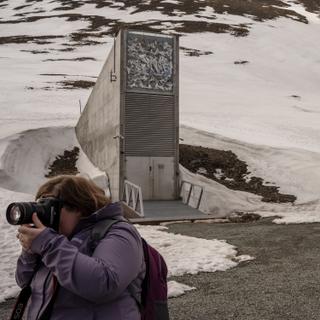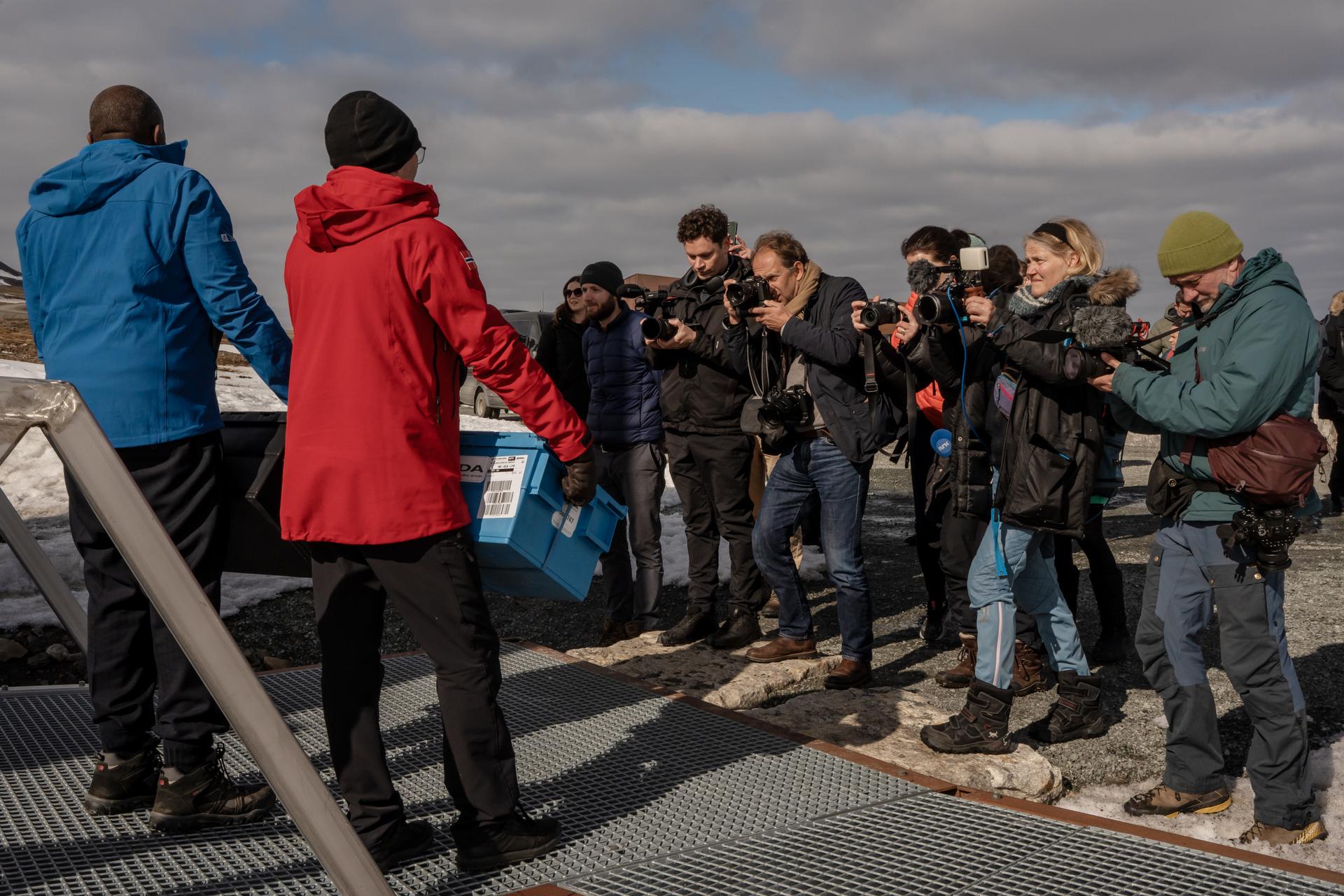


At the heart of the Arctic, the 'Noah's Ark for plants' welcomes new seeds
FeatureSince 2008, 1.3 million seed varieties from 128 countries have been deposited in the global seed vault, located in Norway's Svalbard archipelago. It serves as a life insurance policy in case of disaster.
The concrete triangle stands out against the snow-covered landscape. The mountain's silence is broken only by the comings and goings of tourists, who step out of their bus or taxi for a few minutes to photograph the mysterious structure. The small building, barely wider than its armored door, is neither a work of brutalist art nor a Hollywood movie set. It is the entrance to the global agricultural seed vault – the Svalbard Global Seed Vault – built in Norway's Arctic archipelago, 1,300 kilometers from the North Pole. Often dubbed the "Noah's Ark for plants," it preserves millions of seeds in case of catastrophe.
"This place is one of the most important in the world," said Espen Barth Eide, Norway's foreign affairs minister. "If things go wrong, due to war, climate change, or a nuclear explosion, countries can come and retrieve their seeds and start from scratch." At the end of May, the Norwegian politician and his British counterpart, David Lammy, came to deposit two precious sealed boxes containing, inside aluminum envelopes, seeds of peas, carrots, lettuce and cabbage.

From June 3 to 6, fourteen other countries also brought 11,000 samples: from Korean azuki beans to American rutabagas, Beninese fonio to Vietnamese rice. They were transported directly from the airport in Longyearbyen, the main city of Svalbard, which sits below the reserve. The vault opens only three times a year. The rest of the time, the building remains closed, leaving the seeds in the polar cold and solitude.
You have 76.47% of this article left to read. The rest is for subscribers only.
